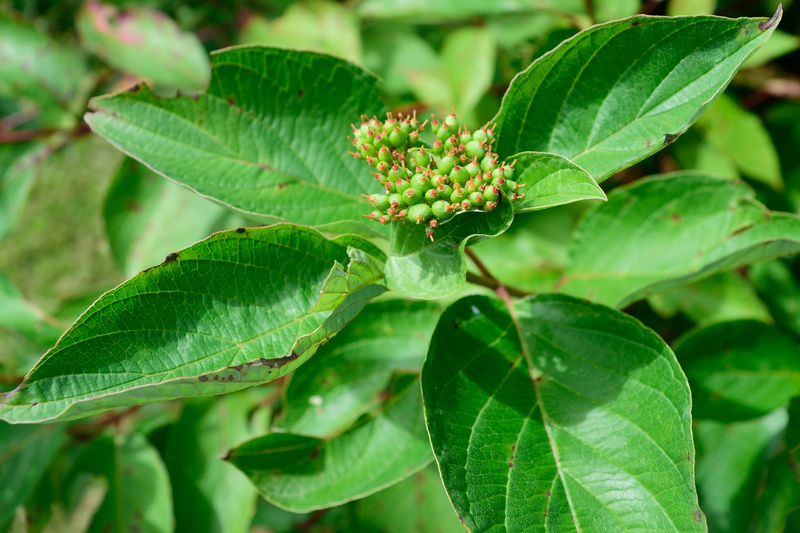Gardening: A Green Weapon Against Climate Change
Posted on 27/08/2025
Gardening: A Green Weapon Against Climate Change
Introduction to Gardening and Climate Change
In an era where climate change poses unprecedented challenges to our planet, innovative and accessible solutions are more crucial than ever. Among these, gardening stands out as a surprisingly powerful ally. Not only does it beautify our surroundings and provide food security, but gardening acts as a subtle yet persistent force in fighting global warming. Whether you are tending to a backyard plot, engaging in community gardening, or developing a lush balcony oasis, your efforts can directly and indirectly combat climate change. Let's explore how gardening is a green weapon against climate change and the multifaceted ways you can make a difference right from your home.

Understanding Climate Change and Its Challenges
Climate change refers to significant alterations in global weather patterns, primarily driven by the increase in greenhouse gases like carbon dioxide (CO?) due to human activities such as burning fossil fuels and deforestation. Its impacts are evident in extreme weather events, rising sea levels, and biodiversity loss. As awareness grows, so does the search for practical and scalable solutions. Here, gardening against climate change is garnering well-deserved attention, turning ordinary landscapes into vital ecological tools.
How Gardening Helps Tackle Climate Change
The intersection of gardening and climate change is rich with synergies. Through their natural processes, plants absorb carbon dioxide, regulate microclimates, support biodiversity, and improve soil health. Sustainable gardening, when practiced widely, has the potential to:
- Capture and store carbon dioxide from the atmosphere
- Reduce heat islands in urban areas
- Enhance local water cycles, thus reducing runoff and flooding
- Support pollinators and native species
- Promote food sovereignty by encouraging local food production
- Lower food miles by producing food closer to where it is consumed
Gardening as a Carbon Sink
Plants are natural carbon sinks. Through photosynthesis, they convert atmospheric CO? into sugars, which help them grow. A well-managed garden - particularly one rich in perennials, shrubs, and trees - can sequester significant amounts of carbon. Even small-scale climate friendly gardens can make a measurable impact if adopted widely.
Combatting Urban Heat Islands
Paved surfaces and concrete structures absorb and retain heat, creating urban heat islands. Urban gardening helps mitigate this effect by introducing plant cover that cools the air through shade and transpiration. Green roofs, living walls, and tree-lined streets are strategic tools in this battle, decreasing local temperatures and reducing air conditioning needs - thus lowering energy consumption and associated emissions.
Boosting Biodiversity
Healthy ecosystems are more resilient to climate shocks. By planting native species and providing habitats for pollinators like bees and butterflies, gardeners nurture biodiversity. Diverse gardens are better able to weather pests, disease, and extreme weather, making them robust climate allies.
Techniques for Climate-Conscious Gardening
For gardening to be an effective weapon against climate change, certain sustainable practices maximize its impact. Here are proven methods for environmentally responsible gardening:
- Choose native and drought-tolerant plants - They require less water and maintenance, thriving in local conditions.
- Practice no-dig gardening - Disturbing the soil less helps retain carbon and preserves soil structure.
- Compost organic waste - Composting diverts waste from landfills and enriches soil naturally.
- Mulch garden beds - Mulching keeps soil moist, reduces weeds, and locks carbon in the soil.
- Collect rainwater - Reduces demand on municipal water supplies and prevents runoff.
- Integrate permaculture principles - Mimic natural systems for more sustainable yields.
No-Dig and Regenerative Gardening
One of the most impactful modern gardening approaches involves minimizing soil disturbance. No-dig gardening, popularized by regenerative farming advocates, allows natural soil processes to sequester more carbon. By avoiding tilling, you protect complex soil life and reduce carbon release. These techniques make your eco-friendly garden more productive and climate-smart.
Composting: Turning Waste into Climate Action
Food scraps and garden waste are a significant portion of landfill mass, where their decomposition releases methane, a potent greenhouse gas. Composting at home vastly reduces this impact and produces nutrient-rich humus, which enhances soil's water retention and carbon storage capacity.
Gardening's Role in Local Food Systems
Industrial agriculture is a major contributor to climate change due to chemical inputs, transportation, and land degradation. Growing your own food, even small quantities, cuts "food miles" and shrinks your carbon footprint. More so, community gardens and urban farms play a pivotal role in urban resilience, providing nutritious produce while reducing emissions associated with commercial food production.
Community Gardens as Climate Solutions
Community gardening initiatives foster collaboration, education, and resource sharing. These gardens often regenerate vacant lots or rooftops, transforming them into productive, green spaces. In addition to storing carbon and producing food, they act as hubs for climate awareness, inspiring others to embrace sustainable practices.
Addressing Common Challenges: Pests, Water, and Weather
With changing weather patterns come new pests and erratic rainfall. How can climate-conscious gardeners adapt?
- Integrated Pest Management (IPM): Favor natural predators, companion planting, and organic methods over chemical pesticides.
- Drought-Preparation: Use mulch, choose drought-tolerant species, and implement efficient irrigation systems like drip lines.
- Rain Gardens: Design areas to capture and use runoff, preventing flooding and enriching plant life.
- Season Extension: Employ cold frames or polytunnels to adapt to unpredictable seasons, maximizing yield and garden resilience.
The Psychological Benefits: Gardening for Climate Hope
Beyond tangible environmental gains, gardening provides psychological resilience in the face of climate anxiety. Tending plants fosters a deep connection to nature, offering tangible action in the midst of global uncertainty. This sense of agency and accomplishment strengthens community bonds and nurtures a stewardship ethic crucial for long-term sustainability.
Innovative Trends: The Future of Green Gardening
Looking ahead, the gardening landscape is evolving with technology and new practices that amplify its climate benefits. Some key developments include:
- Smart gardening tools - IoT devices monitor moisture, temperature, and optimize irrigation for water conservation.
- Vertical gardens - Expanding greenery even in limited urban spaces.
- Edible landscapes - Combining aesthetics with food production for maximum utility.
- Rewilding gardens - Allowing parts of gardens to return to a wilder, native state for greater biodiversity.
- Seed sharing networks - Building resilient, locally-adapted plant gene pools.
Gardening as Citizen Science
Many gardeners are now joining citizen science initiatives, collecting valuable data on plant and pollinator populations, soil health, and microclimate trends. This grassroots participation informs climate research and policy, making gardening a crucial part of the solution loop.
Gardening in Schools and Public Institutions
Schools, hospitals, and other public spaces play an instrumental role in integrating climate-friendly gardening into communal life. Educational gardens teach children about food systems, ecology, and climate action, all while providing safe green spaces that moderate temperatures and encourage healthy eating habits. Public gardens can be models for sustainability, inspiring scalable and replicable projects worldwide.
Overcoming Barriers to Gardening for Climate Action
Although the benefits are clear, obstacles to widespread gardening remain. Lack of space, knowledge, and resources are common hurdles. Solutions include:
- Container gardening and vertical systems for limited spaces
- Workshops, online resources, and community support to share expertise
- Policy support for urban gardening, incentives for green roofs, and public investment in community spaces
Five Steps to Begin Your Climate-Friendly Garden
- Assess your space and conditions - Sun, soil, wind, and water availability
- Choose climate-resilient plants, preferably native species
- Practice sustainable soil care - Compost and mulch generously
- Reduce reliance on chemicals and synthetic fertilizers
- Connect and share with others in your community to scale up impact

Gardening: Small Actions, Global Results
Each green garden for climate change may seem insignificant by itself. Yet, the collective result of millions of people digging, planting, and nurturing makes a tangible difference. Gardens provide carbon sinks, cool our cities, feed our communities, and restore biodiversity - all critical in the climate change fight.
The beauty of using gardening as a green weapon against climate change lies in its accessibility and scalability. Anyone, anywhere, can participate. Whether you care for a simple window box or rehabilitate a neighborhood park, your actions matter. Let your garden be both sanctuary and solution in a world that needs both.
Conclusion: Join the Green Revolution
Climate change is an overwhelming challenge, but solutions are sprouting in our own backyards. Gardening remains one of the most accessible, effective, and satisfying responses available. With every seed planted and every square foot of green cover created, we move closer to a sustainable and resilient future. Embrace gardening as a weapon against climate change and become part of a global movement for healing the earth, one plant at a time.
Start today--because every garden counts in the fight against climate change.



